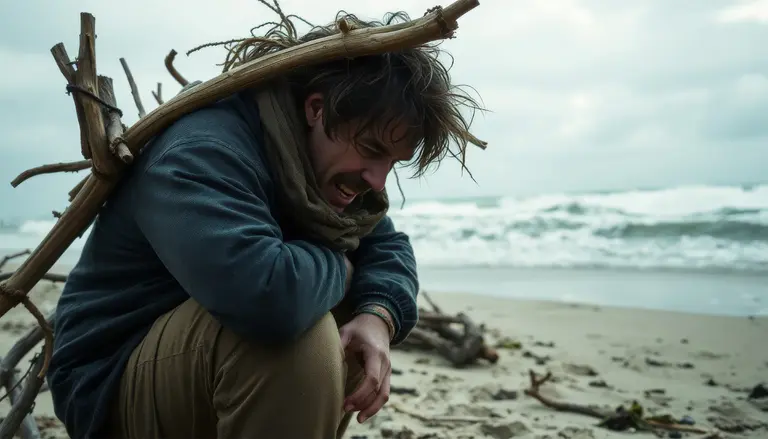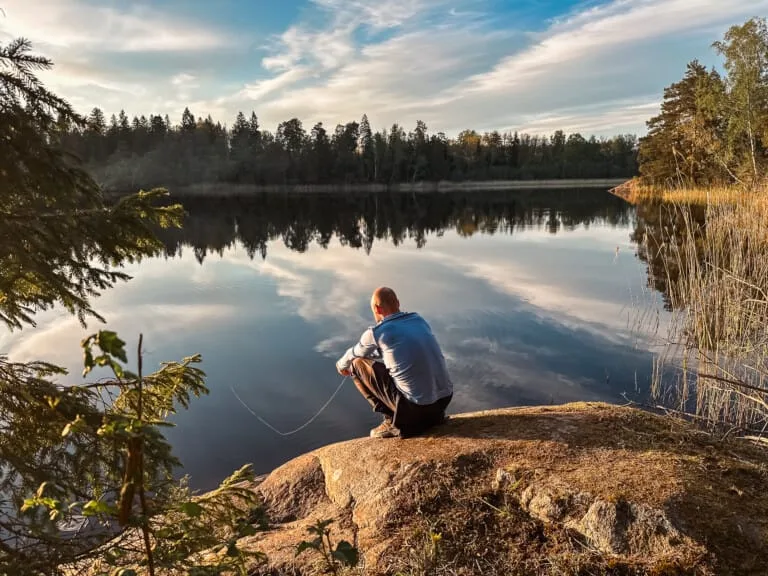
Tonga Castaways: The real Lord of the Flies
In June 1965, six Tongan teenage boys set out on an adventure that turned into a real-life version of “Lord of the Flies”. The boys, stranded on the uninhabited island of ‘Ata for more than a year, survived by relying on primitive instincts, teamwork, and an innate desire to live.
Who were the Six Boys Stranded for 15 Months on a remote island?
The six boys were students from a Tongan boarding school whose ages ranged from 13 to 16. Their names are:
- Mano Totau
- Sione Fataua
- Stephen Fatai
- Kolo Fekitoa
- David Fifita
- Luke Veikoso

Why did the Tongan Castaways Run Away?
Tired of school and seeking adventure, the six kids stole a boat, only to be hit by an unsuspecting storm and shipwrecked on a remote uninhabited island. Their hopeful view of freedom soon turned into a harsh reality, facing the deserted island of ‘Ata. (Which sits only 200 miles from where we maroon our castaways on our Tongan survival expeditions).

How Six Kids Survived Being Shipwrecked for 15 Months?
Once on the uninhabited island, the boys quickly realised that they have to find a way to navigate the unforgiving terrains of an uninhabited island. After 3 months, the Tongan castaways were lucky enough to have found the ruins of the village of Kolomaile with feral chicken, wild taro and bananas. With that and essential survival skills they were able to sustain themselves during their 15-month-long ordeal.
Here’s a detailed look at these life-sustaining practices:
Water Acquisition:
In an environment where freshwater was a luxury, the boys innovated. They meticulously captured rainwater, storing it in hollowed-out tree trunks. These natural reservoirs ensured they had a relatively steady supply of water, safeguarding them from dehydration.
Desperate Times Call for Desperate Measures: There were times when rain was sparse, and their tree trunk reservoirs ran low. In these moments, their sheer will to survive became evident. With limited coconuts, they turned to the blood of seabirds, a source of hydration, tapping into primitive survival instincts.
Sourcing Food:
With no pigs to dig it up, the island was rife with wild taro. The boys, leveraging their knowledge and innate adaptability, foraged extensively for this nutritional root, turning it into a dietary staple.
Fishing Proficiency: The ocean was both a barrier to their freedom and a bounty of sustenance. Using tools they crafted from debris, such as makeshift fishhooks and spears, they became adept fishermen. Their diet expanded to include fish, lobsters caught during low tide, and birds they trapped.
Mastery of Fire:
Ignition and Maintenance: The initial ember was birthed using sea hibiscus for a fire plough. An age-old technique passed down through generations. But what’s even more remarkable is their tenacity in maintaining this fire. It became a beacon of hope, glowing continuously throughout their 15-month stay. They understood its importance not only for warmth and cooking but as a signal, should any rescue party be nearby.

Shelter Construction:
The island provided them with a plethora of materials. Using palm fronds, sturdy sticks, and their creative prowess, the boys constructed shelters without tools. These became their refuge at night, shielding them from tropical storms over the cyclone season, and offering some semblance of home in their isolated surroundings.
The tenacity, resourcefulness, and adaptability of the Tongan castaways are a testament to human endurance and the will to survive. Their story offers lessons for anyone looking to understand the depths of human capability and the antithesis of William Golding fictional story.
Join our Tonga Desert Island Survival Expedition to learn the same skills and experience what survival is all about.
How did the Tongan Castaways Survive with Their Humanity Intact?
Despite the dire situation, the group of six Tongan teenage boys managed to maintain their humanity, structure, and a sense of civilization that transcended mere survival. They not only developed ingenious ways to sustain themselves physically but also nurtured their mental and emotional well-being. Here are some the techniques they applied:
Dividing Labour: Understanding the importance of teamwork and order, the boys divided labour among themselves, ensuring that everyone had a role. Pairing up for tasks like gardening, kitchen duties, and guard duty fostered a sense of responsibility and kept them engaged.
Leadership Roles: The two eldest boys emerged as natural leaders, one tending to the group’s spiritual needs and the other focused on practical matters. This leadership helped guide the group, providing stability and a sense of direction.
Emotional Support: They supported each other emotionally, sharing the burden of despair and loneliness, and maintaining a sense of hopefulness. They would pray together, sing songs, and create their rituals, fostering a sense of camaraderie and connection that sustained them through their ordeal.
Respect for Life: Remarkably, the boys even held funerals for birds they killed for food. These rituals symbolized their continued respect for life, even in their desperate situation. They did not lose sight of their empathy and compassion, recognizing the value of every living thing.
Creating a Sense of Home: By reviving remnants of the ancient village of Kolomaile, they recreated a semblance of home in their inhospitable environment. They revived cultural practices and adapted them to their new circumstances, keeping their cultural heritage alive.
Conflict Resolution: Even when disputes arose, the boys would take time to cool off at separate ends of the beach and then return to discuss the issue calmly. They had a shared goal, and they knew that working together was their only hope of survival.
Adherence to Hygiene and Discipline: The boys also set up latrine areas and maintained strict cleanliness rules. They understood the importance of sanitation, a testament to their maturity and understanding of how to create a liveable environment.
Hope and Perseverance: Despite the trials they faced, they never lost hope. They believed in the possibility of rescue and worked hard to keep themselves ready for that moment. Their belief in themselves and each other kept them alive in spirit as well as body.
In a situation that could have brought out the worst in human nature, the story of the Tongan castaways is a remarkable tale of resilience, empathy, and human decency. They didn’t just survive; they thrived, keeping their humanity intact.

Who Found the Tongan Castaways?
The six teenage boys were rescued in September 1966 by Peter Warner, an Australian fishing boat captain, and his crew. While sailing through the remote Tongan waters, Peter Warner was drawn to the uninhabited island of ‘Ata by unusual signs of life. He noticed burned grass, long thought to be uninhabited, and a permanent fire glowing from the shore.
Upon investigating, Warner and his crew made an astonishing discovery. On Ata Island, they found the six Tongan teenage boys, alive and well.
Their initial encounter was a mix of disbelief and joy. Warner’s astonishment at finding the boys in such good health was matched only by the boys’ excitement at being rescued. What was initially a routine exploration turned into a rescue mission, as Warner and his crew took the young men and sailed back to Tonga.

Upon returning to civilization, the boys were long thought dead and were welcomed as heroes. The news of their survival spread across the world, turning them and Warner into international sensations. The connection between Warner and the boys ran deep, and he went on to play a significant role in their lives, highlighting the extraordinary bond forged through this unique discovery.
A Re-Enactment of the Tongan Castaways’ Adventure
The story has been re-enacted and captured in a few photos and documentaries. From their boarding school days to being rescued, it’s a tale that continues to inspire and offers lessons on survival, empathy, and the real essence of life.
Check out these videos to get an idea:
Is there a Book about the Tongan Castaways?
The story of the six Tongan castaways is discussed in chapter one of the absolutely brilliant book Human kind which we think everyone should read.
The story of course bears resemblance to the fictional “Lord of the Flies” by William Golding, featuring British boys stranded on an island. But unlike the dark tale in the book, the real-life version of this story is one of resilience, compassion, and triumph over adversity.
The stark differences between the “Lord of the Flies” narrative and the story of the six Tongan teenage boys true story highlighted a hopeful view of human nature. While the British boys in Golding’s tale descended into chaos, the six Tongan boys showcased unity, resilience, and humanity.
Golding was a jaded alcoholic who did not like children and had a little faith in humanity. It is a shame his book is sighted as a belief of what would happen in the event of a group being marooned on an island. At least we know the real truth.
The story of the Tongan castaways not only inspired books but also led to documentaries and film adaptations. Their real-life experience captured the essence of what it means to be human, to fight, to bond, and to grow. It’s a timeless tale that will continue to inspire generations to come.
The Legacy of the Six Tongan Castaways
The story of the six Tongan castaways is more than just an adventure. It’s a testament to human spirit, resilience, and the ability to survive and thrive in the most challenging situations.
Embark on a journey with us on a remote island in Tongan waters, where you’ll learn essential survival skills, understand the thrill of living on the edge, and reconnect with nature.
Join our Tonga Desert Island Survival Expedition to understand the art of survival and discover the real essence of living.







